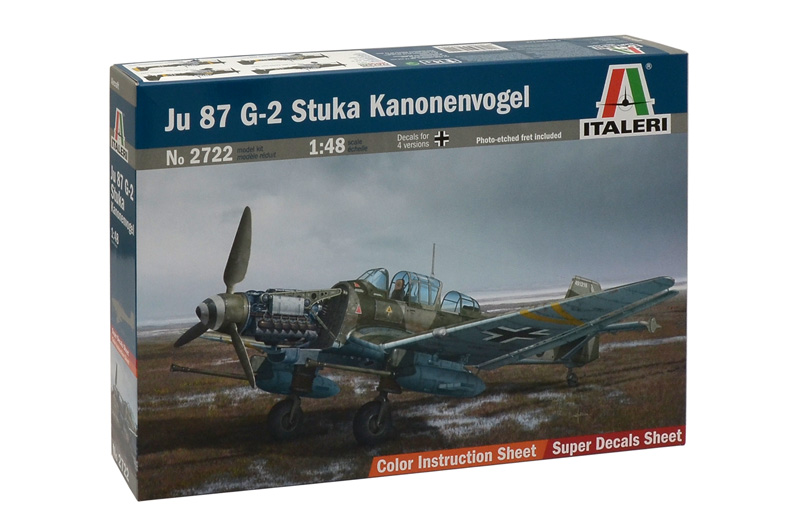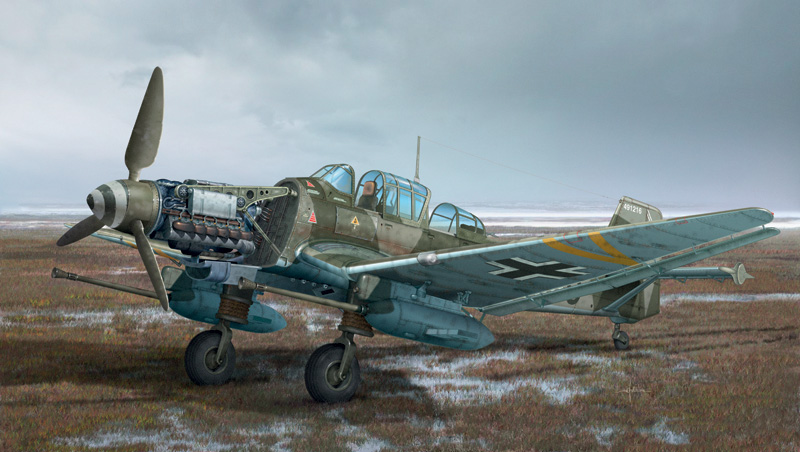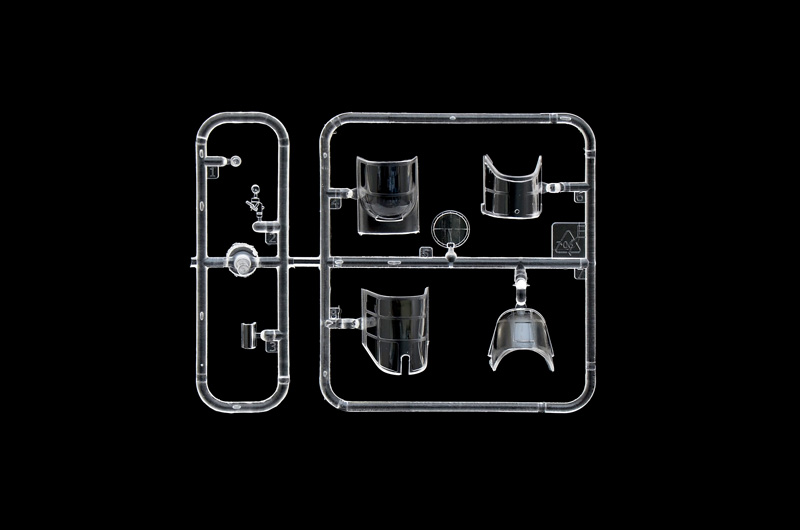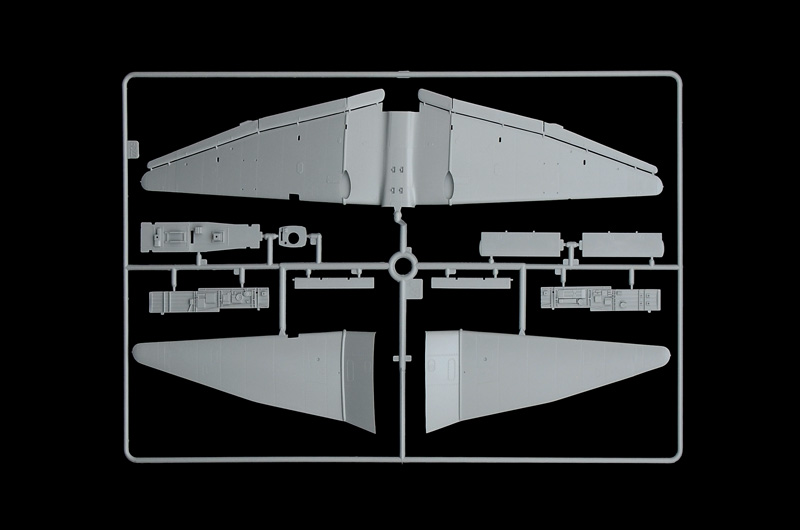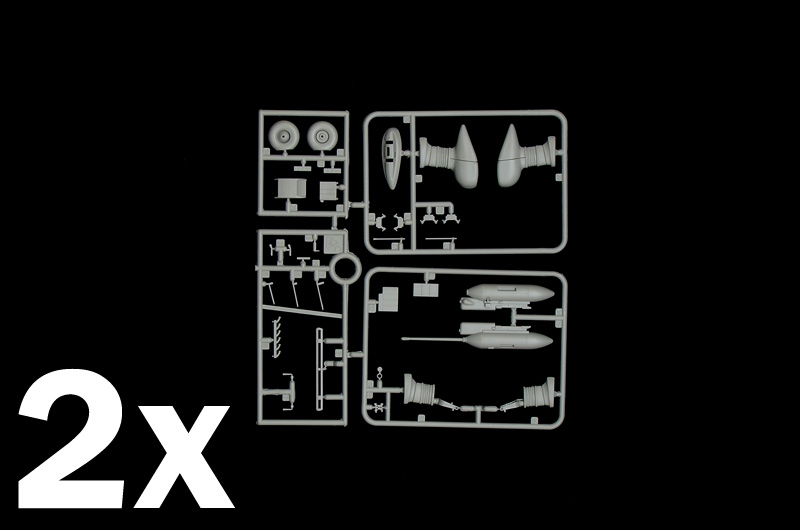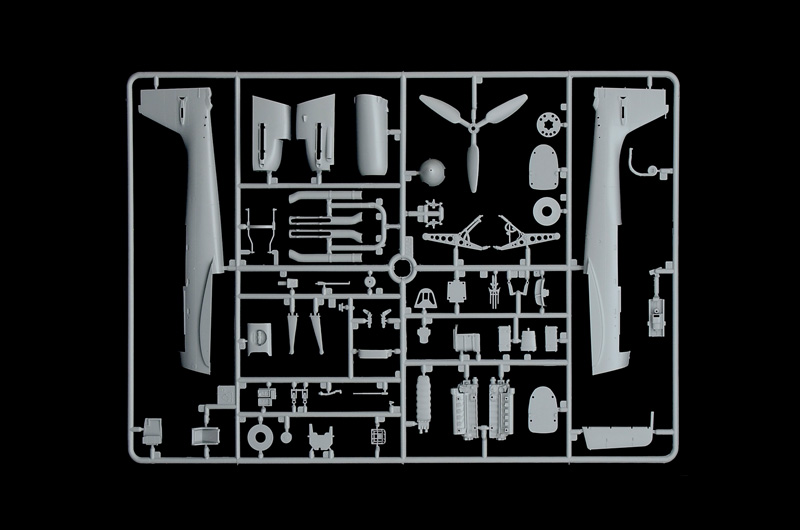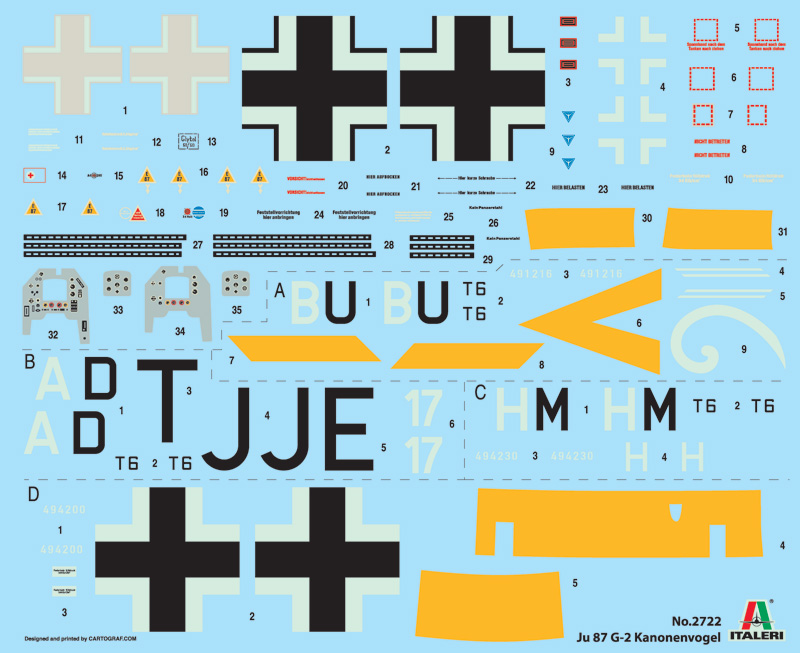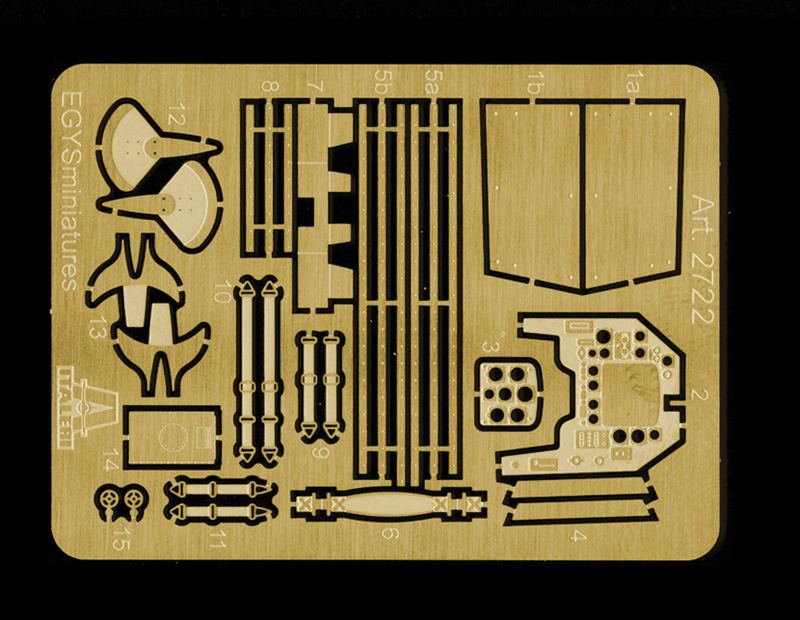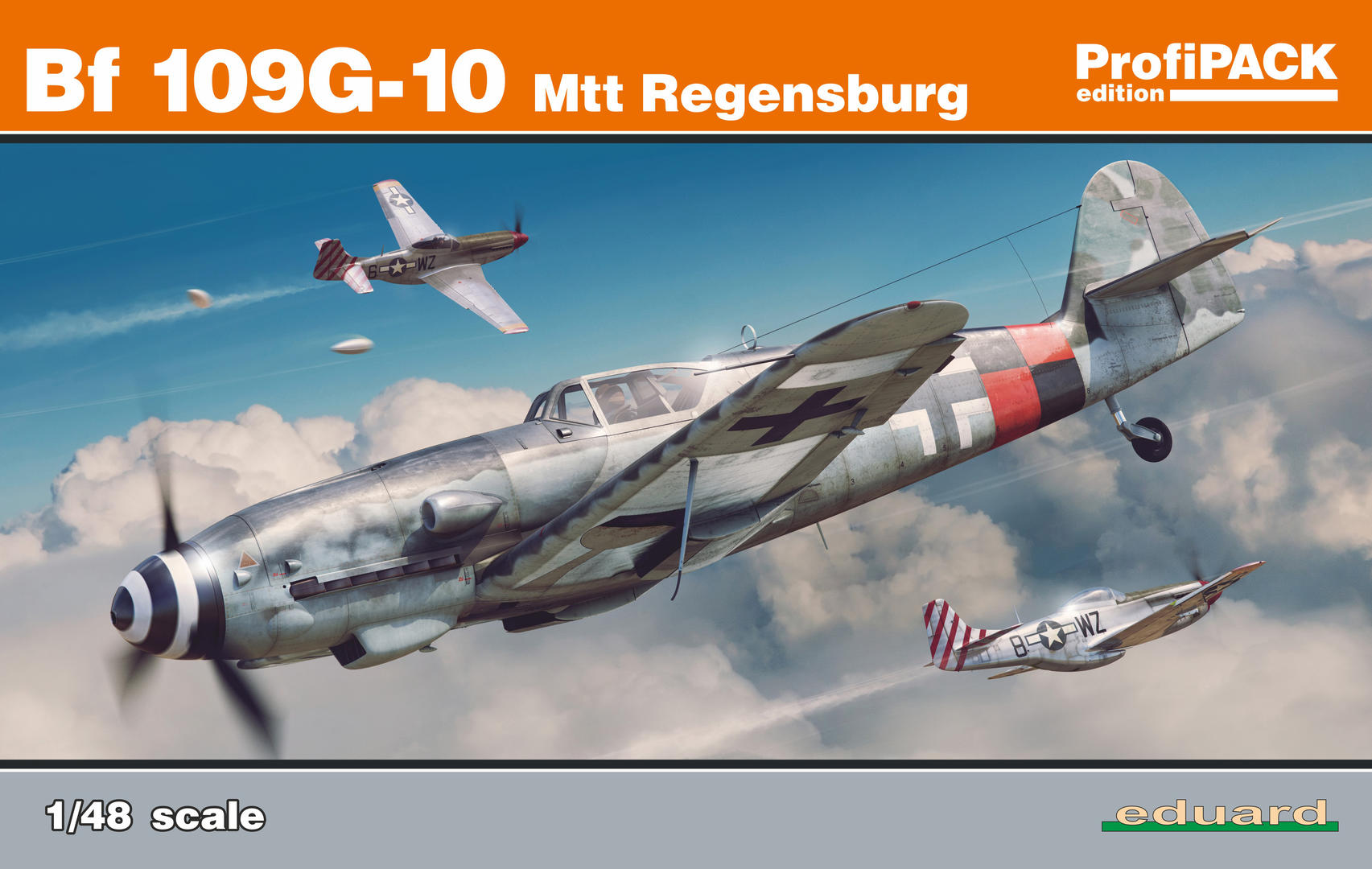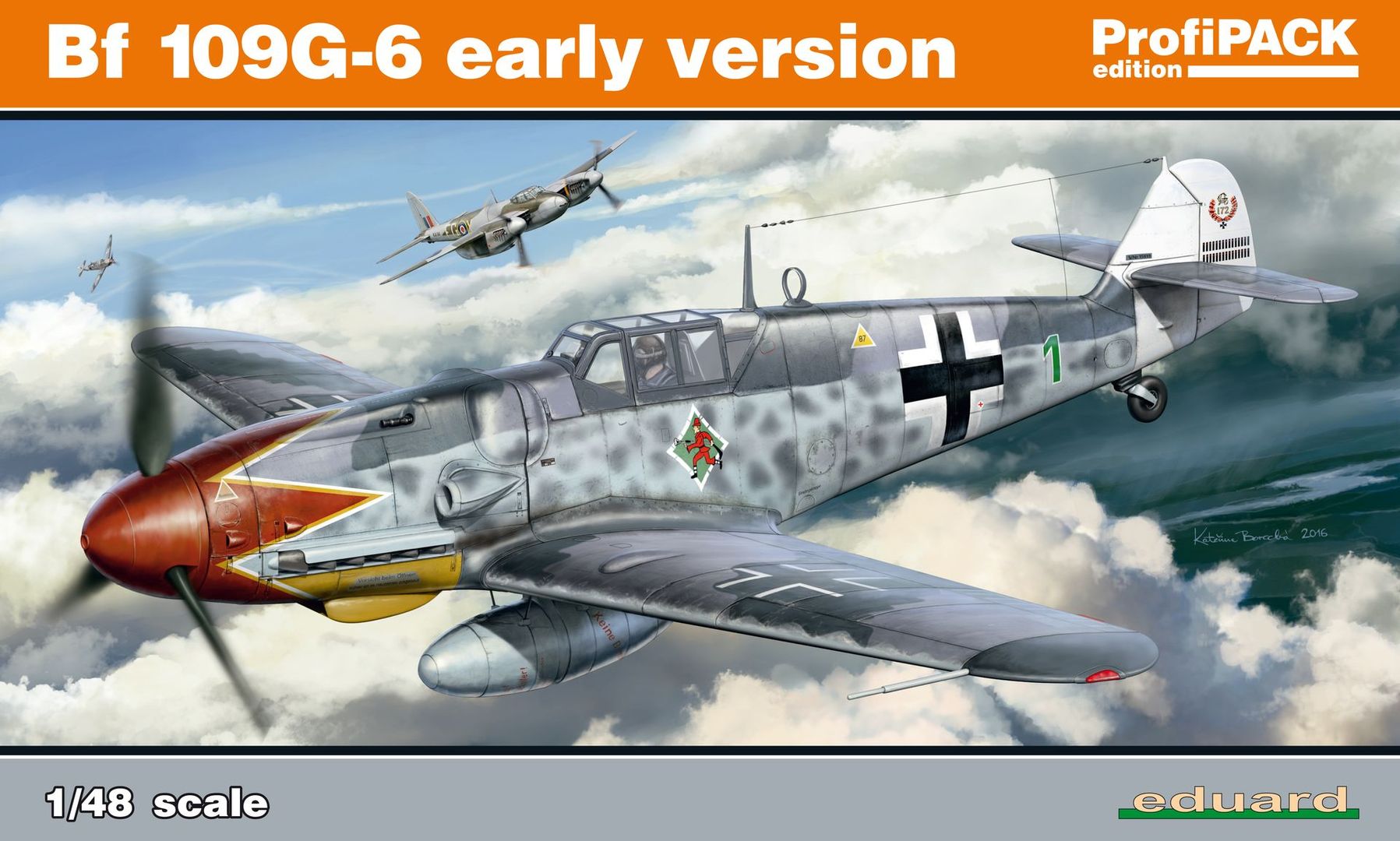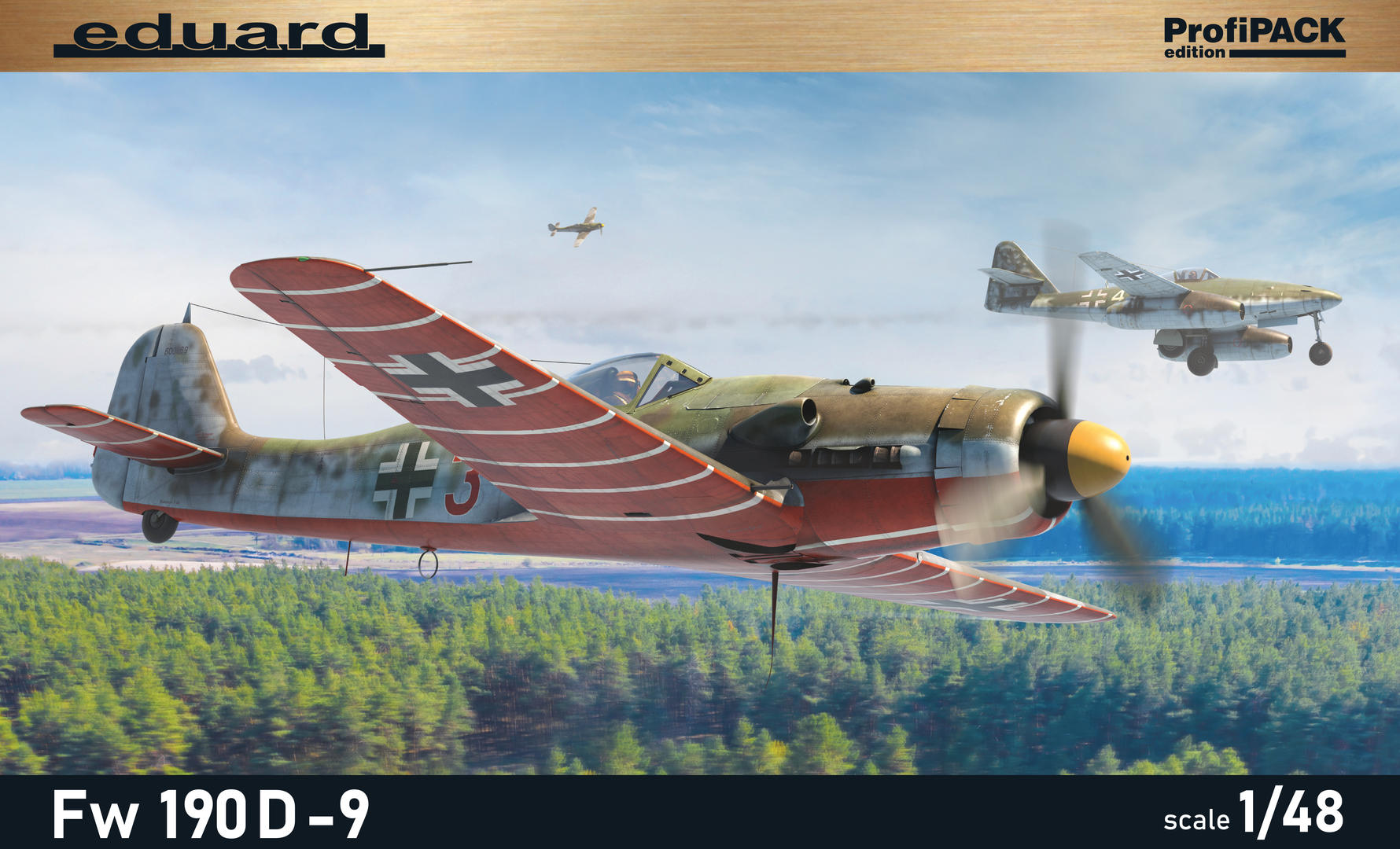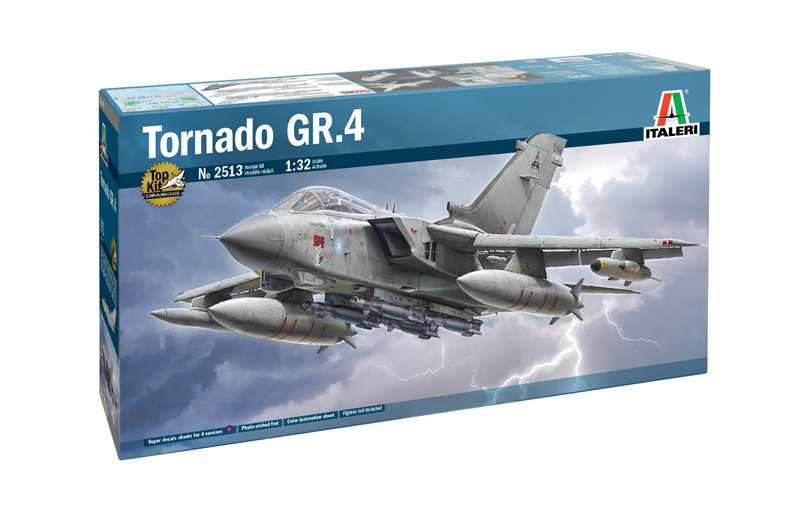Italeri : Ju 87 G-2 Stuka : 1/48 Scale Model : In Box Review
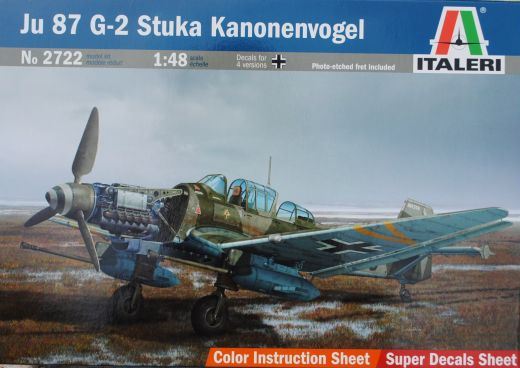
Ju 87 G-2 Stuka
- Manufacturer: Italert
- Scale: 1/48
- Box Release Date: 2013
- New Tool Date: 2010
- Presented By: Bobby Waldron
- Marking options: 4
- Model dimension: Length: ?? Wingspan: ?? Height: ??
- Decals: Cartograf
- PE parts: Yes
- Painting mask: No
- Resin parts: No
- Item No: 2722
The Junkers Ju 87 or Stuka (from Sturzkampfflugzeug, “dive bomber”) was a German dive-bomber and ground-attack aircraft. Designed by Hermann Pohlmann, it first flew in 1935. The Ju 87 made its combat debut in 1937 with the Luftwaffe’s Condor Legion during the Spanish Civil War of 1936-1939 and served in Axis forces in World War II (1939-1945).
The aircraft is easily recognisable by its inverted gull wings and fixed spatted undercarriage. Upon the leading edges of its faired main gear legs were mounted the Jericho-Trompeten (Jericho trumpets.) – wailing sirens, which became a propaganda symbol of German air power and of the so-called Blitzkrieg victories of 1939–1942 – as well as providing Stuka pilots with audible feedback as to speed. The Stuka’s design included several innovations, including automatic pull-up dive brakes under both wings to ensure that the aircraft recovered from its attack dive even if the pilot blacked out from the high g-forces.
The Ju 87 operated with considerable success in close air support and anti-shipping roles at the outbreak of World War II. It led air assaults in the invasion of Poland in September 1939. Stukas proved critical to the rapid conquest of Norway, the Netherlands, Belgium and France in 1940. Though sturdy, accurate, and very effective against ground targets, the Stuka was, like many other dive bombers of the period, vulnerable to fighter aircraft. During the Battle of Britain of 1940-1941, its lack of manoeuvrability, speed and defensive armament meant that it required a heavy fighter escort to operate effectively.
After the Battle of Britain, the Luftwaffe deployed Stuka units in the Balkans Campaign, the African and the Mediterranean theatres and in the early stages of the Eastern Front war, where it was used for general ground support, as an effective specialised anti-tank aircraft and in an anti-shipping role. Once the Luftwaffe lost air superiority, the Stuka became an easy target for enemy fighter-aircraft. It was produced until 1944 for lack of a better replacement. By 1945 ground-attack versions of the Focke-Wulf Fw 190 had largely replaced the Ju 87, but it remained in service until the end of the war in 1945.
Germany built an estimated 6,000 Ju 87s of all versions between 1936 and August 1944.
Oberst Hans-Ulrich Rudel became the most successful Stuka pilot and the most highly decorated German serviceman of the Second World War.

